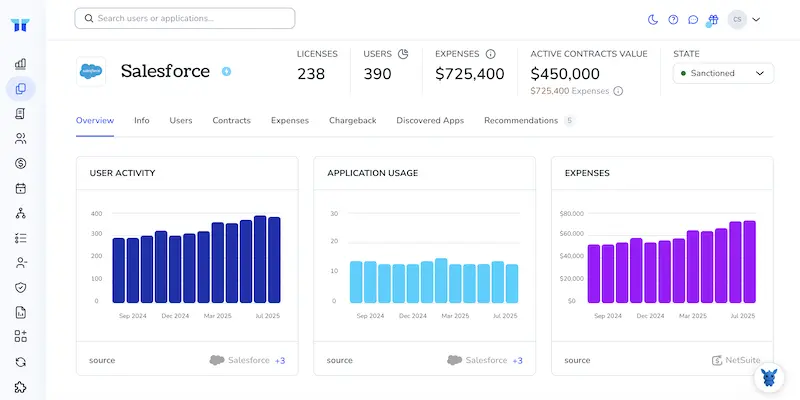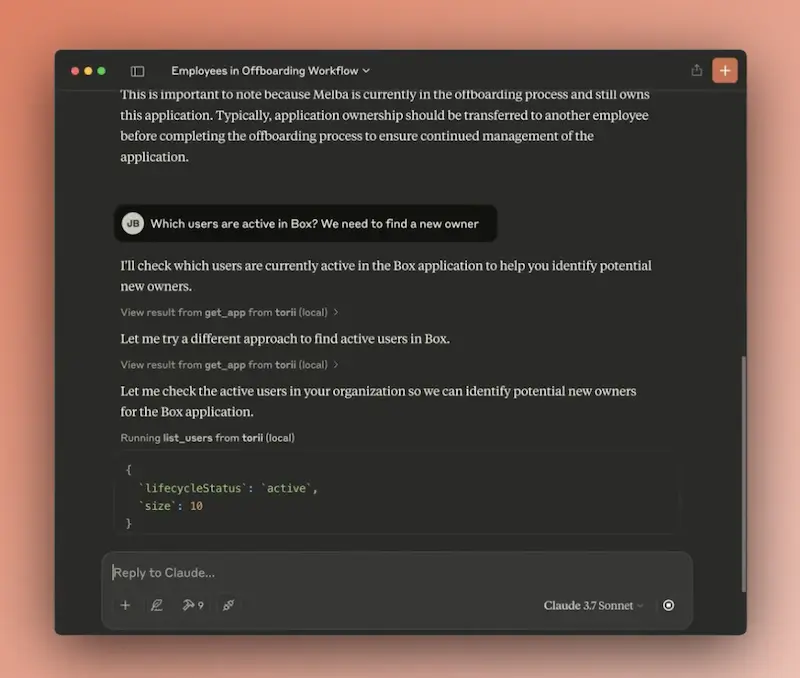4 Ways to Monitor Spending in Your Salesforce Account

Keeping an eye on your spending in Salesforce can feel overwhelming, but it doesn’t have to be. With the right methods in place, you can stay on top of your budget and ensure financial efficiency without breaking a sweat.
In this article, we’ll explore four effective ways to monitor your Salesforce account spending. These strategies will help you track your expenses and make smarter decisions, so you can focus on what really matters, growing your business.
Table of Contents
Use Salesforce’s UI
Here, you’ll use built-in Salesforce pages to confirm costs and see how quickly those entitlements disappear.
1. Open the Your Account app
- Click the App Launcher (the waffle).
- Type “Your Account” in the search box and pick the app.
Salesforce Help covers this in the “Your Account App Overview.”
2. Check your subscriptions
- In the left sidebar, choose Subscriptions.
- The grid shows each product, the number of licenses, and the price per term.
- Need more detail? Click the product name. You’ll see start and end dates, renewal info, and any add-ons.
3. Review upcoming invoices
- While you’re still in the Your Account app, click Invoices.
- Scan the list for the next bill date and amount.
- Select any invoice to view a line-item breakdown or download a PDF for accounting.
4. Track usage-based entitlements
From Setup, enter “Usage” in Quick Find and pick Usage-Based Entitlements.
(See Salesforce Help: “Monitor Your Usage-Based Entitlements.”)
The table lists items such as API Calls, Digital Engagement Messages, or Data Storage.
For each item, note:
- Total units purchased
- Units used this month
- Units remaining
- See a number in red? You’re over 100 % for the period and will see an overage fee on the next invoice.
5. Set up limit alerts (optional but smart)
- On the same Usage-Based Entitlements page, click the bell icon next to any entitlement.
- Pick a threshold, for example 80 %, and save.
- Salesforce emails you when you cross that line so you can adjust before extra charges land.
6. Export data for finance
- In the Your Account app, open Invoices again.
- Use the Export button to pull a CSV of all invoice headers or drill-down details.
- Hand that file to finance or load it into a spreadsheet for your own trend chart.
Use Torii
Instead of accessing Salesforce directly, consider using Torii, a SaaS Management Platform, to monitor your spending in Salesforce. SMPs offer a consolidated view of your SaaS subscriptions, helping you establish a trustworthy source of information for all your SaaS solutions.
To track spending in Salesforce through Torii, follow these steps:
1. Register for Torii
Contact Torii to request your complimentary two-week proof-of-concept.
2. Link your Salesforce account to Torii
Once your account is activated, connect Salesforce to Torii (if you have an existing account). Check the guidelines for integrating Salesforce.
3. Look for Salesforce in Torii
Use the search feature at the top of the Torii dashboard to locate Salesforce. This will lead you to your Salesforce page, where you can view essential details about the account, including the number of licenses, total spending, next renewal date, and more.

Or, chat with Eko
Torii’s AI companion, Eko, helps you find Salesforce information directly in Torii. Just click the Eko icon in the bottom right corner of your dashboard to request Salesforce details. Eko will deliver the relevant data right in the chat window.

Use Salesforce’s API
Below, you’ll pull spend totals straight from Salesforce, skipping dashboards for direct API calls.
1. Get your access token
Send a POST to the OAuth 2.0 token endpoint
POST https://login.salesforce.com/services/oauth2/token
grant_type=password
client_id=
client_secret=
username=
password=
Salesforce returns access_token, instance_url, and token_type. Keep them handy.
2. Build a SOQL query that sums spend
Decide where you store spend. In many orgs the total lives on the Opportunity Amount field or a custom field like Total_Spend__c on a custom object. Either way, you can group and sum in one call.
Example: total spend by Account for the last 30 days, assuming spend sits on Opportunity Amount.
SELECT AccountId, SUM(Amount) total
FROM Opportunity
WHERE CloseDate = LAST_30_DAYS
AND IsClosed = true
GROUP BY AccountId
3. Call the REST API with your query
GET /services/data/v59.0/query?q=SELECT+AccountId,+SUM(Amount)+total+FROM+Opportunity+WHERE+CloseDate+=+LAST_30_DAYS+AND+IsClosed+=+true+GROUP+BY+AccountId
Authorization: Bearer
Host:
The response comes back as JSON rows like:
{
"records": [
{
"AccountId": "0015g00000abc123",
"total": 45000
}
],
"done": true
}
4. Page through long result sets
If "done": false, grab the nextRecordsUrl value and call it:
GET /services/data/v59.0/query/01g5g00000XYZAAA
Authorization: Bearer
Repeat until "done": true.
5. Track spend over time with dated subqueries
Need monthly spend for the past year? Loop through 12 queries, each using a custom date range:
WHERE CloseDate >= 2023-01-01 AND CloseDate <= 2023-01-31
Store each month’s total in your own data store or reporting tool for trend charts.
6. Keep an eye on API limits
Call /services/data/v59.0/limits to see remaining daily API calls:
GET /services/data/v59.0/limits
Authorization: Bearer
Parse the DailyApiRequests block and pause requests when you’re close to the limit.
7. Automate and alert
- Schedule the script in your job runner (cron, GitHub Actions, etc.).
- After each run, compare the returned totals against budget thresholds.
- If spend passes a limit, trigger your alert system (Slack, email, SMS).
That’s it. A handful of REST calls and a short loop put real-time spend data wherever you need it, clicks optional.
Use Claude (via MCP)
You can obtain this information directly from Claude using the Model Context Protocol (MCP). Claude is an AI chatbot developed by Anthropic, providing an alternative to ChatGPT.
To track your spending in Salesforce using Claude, follow these steps:
1. Configure Torii
Begin by following the Torii instructions to connect your Salesforce account with Torii.
2. Enable MCP in Claude
Consult these Torii MCP guidelines. Additionally, there’s a blog entry detailing this topic.
Install the Claude Desktop application. Then, modify the claude_desktop_config.json file with these entries:
{
"mcpServers": {
"Torii MCP": {
"command": "env",
"args": [
"TORII_API_KEY=YOUR_API_KEY",
"npx",
"@toriihq/torii-mcp"
]
}
}
}
You can generate this API key in the Settings section of Torii.
3. Interact with Claude
Once the setup is complete, engage with your Torii environment directly through Claude. For instance, you can ask Claude to review your Salesforce account, helping you uncover details like the number of licenses you have, your spending, renewal dates, and more.

Torii for SaaS Management
If you’re interested in SaaS Management, reach out to us. Torii’s SaaS Management Platform provides the tools to:
- Discover hidden applications: AI continuously monitors your organization for unauthorized software in real-time.
- Reduce expenses: Cut spending by eliminating unused licenses and overlapping tools.
- Streamline onboarding and offboarding automation: Improve your IT operations to boost efficiency and reduce errors, covering the onboarding of new hires and the offboarding of departing employees.
- Receive alerts for contract renewals: Stay on top of critical contract renewal deadlines.
Torii is known as the first comprehensive SaaS Management Platform in the industry, offering a unified view for Finance, IT, and Security teams.
Learn more by visiting Torii.
Frequently Asked Questions
You can monitor spending in Salesforce by using the Salesforce UI, Torii SaaS Management Platform, Salesforce API, or Claude via MCP for direct insights.
In the Your Account app, you can check your subscriptions, review upcoming invoices, and track usage-based entitlements for a clearer cost overview.
Torii provides a consolidated view of your Salesforce account, revealing spending, license details, and renewal dates to manage costs effectively.
You need to obtain an access token, build a SOQL query for expenses, and call the REST API to retrieve and analyze spending data.
In the Usage-Based Entitlements section, click the bell icon, choose a threshold like 80%, and save it to receive email alerts for overspending.
Torii helps discover unauthorized software, reduce expenses by eliminating unused licenses, and streamlines onboarding and offboarding, enhancing operational efficiency.

